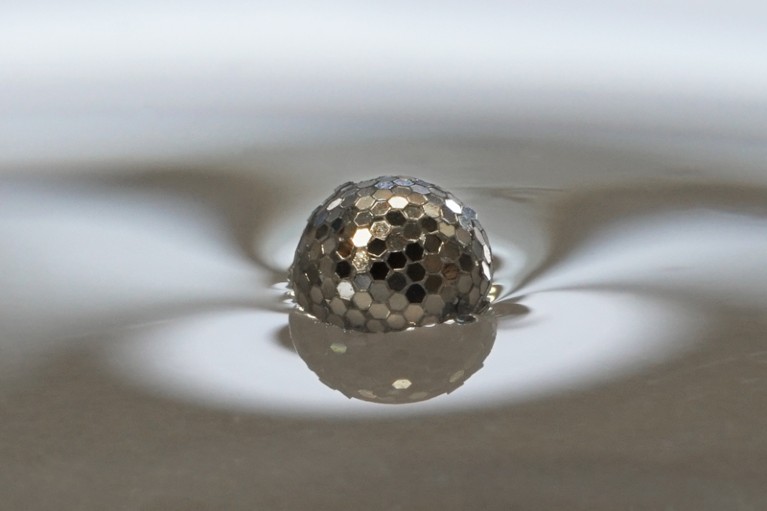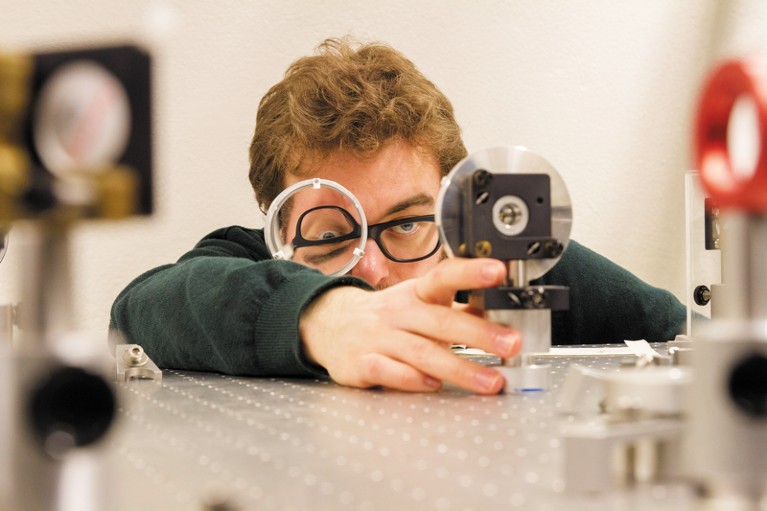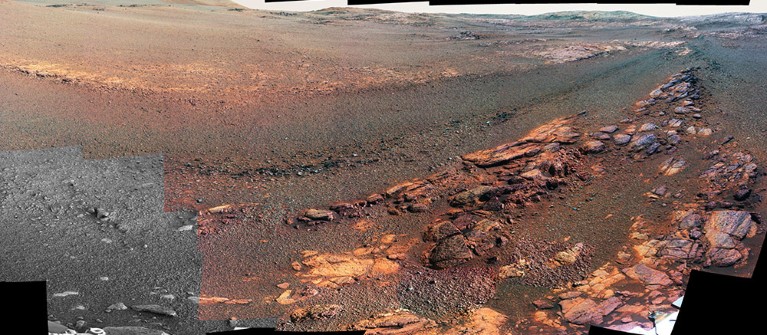Hello Nature readers, would you like to get this Briefing in your inbox free every day? Sign up here.

A February climate protest by students in London.Credit: Wiktor Szymanowicz/NurPhoto/Getty
Scientists support school strike for climate
Tens of thousands of scientists have released statements expressing support for the ongoing climate strikes by schoolchildren. Today is set to be the biggest moment yet for the grassroots movement inspired by Swedish teen Greta Thunberg, in which young people walk out of schools to demand that adults do more to combat climate change. The young protesters “have every right to be angry about the future that we shall bequeath to them, if proportionate and urgent action is not taken”, said the statement from 224 UK academics.
Scientists fight deforestation in Australia
Children aren’t the only ones lobbying for action on climate change this week. Nearly 400 scientists have signed a letter calling for Australia to introduce tougher laws against land clearing, which has increased dramatically over the past decade. Land clearing has been linked to increases in the number of threatened species, and it also contributes to global warming, which raises the risk of bushfires and drought.
Small self-assembling silver soccer balls
Scientists have been engineering liquid marbles for more than a decade by encasing droplets in ‘armour’ made of spherical particles. Now, scientists have swapped the armour spheres for hexagonal plates. The modified droplets self‐assemble into shapes such as cylinders, dumbbells and even letters, which could function as microscopic ball bearings, miniature vessels for chemical reactions, and various types of sensors.
Nature Research Highlights | 1 min read
Reference: Advanced Functional Materials paper
Get more of Nature’s Research Highlights: short picks from the latest papers.

What looks like a floating disco ball is actually a ‘liquid marble’ formed from a water droplet coated in hexagonal plastic particles. Credit: F. Geyer et al./Adv. Funct. Mater.
FEATURES & OPINION
Eddington puts Einstein to the test
In 1918, as the First World War drew to an end, astronomer Arthur Eddington set out on a challenging mission: to prove Einstein’s new theory of general relativity by measuring stars' gravity-shifted positions in the sky during a total eclipse. The experiment became a defining example of how science should be done. The Nature PastCast delves into the story behind one of the most influential papers ever published in Nature.
Nature PastCast | 16 min listen (first broadcast in 2014)
Is ‘prediabetes’ turning healthy people into patients?
Prediabetes — a slight elevation in blood glucose — rarely leads to full-blown type 2 diabetes and started its life as a public-relations catchphrase, reports Science. Yet the category has spawned public-health programmes worth billions of dollars, and at least ten classes of drug. Now, physicians and researchers are questioning whether a sweeping diagnosis that encompasses one-quarter of the US population is doing more harm than good.
SCIENTIFIC LIFE

PhD student Joseph Beckwith was among more than 300 readers who sent images to Nature’s photo competition.Credit: Bogdan Dereka
Mistaken for a chocolatier
Speak up early when misunderstandings arise, says immunologist Jamie Sugrue, or risk their snowballing into something you never prepared for. Such as being asked to make bespoke chocolate for the invited speakers at the 25th International Hepatitis C conference.
BOOKS & ARTS
Five best science books this week
Barbara Kiser’s pick of the top five science books to read this week includes the wild side of discovery, a history of information warfare, and the immune system uncovered.
IMAGE OF THE WEEK

This stunning 360-degree image is the last panorama captured by NASA’s Opportunity rover on Mars. The view is of Perseverance Valley in Endeavour crater, which would become Oppy’s final resting place. The rover ran out of juice last June, following an epic 15-year mission exploring the red planet. Visible are the tracks of the rover that “begin their descent from over the horizon and weave their way down to geologic features that our scientists wanted to examine up close”, says Opportunity project manager John Callas. “And to the far right and left are the bottom of Perseverance Valley and the floor of Endeavour crater, pristine and unexplored, waiting for visits from future explorers.”
